Part 2 of our Portuguese escapade
Touring from Évora in Alentejo, via historical Tomar, to Porto in the north, and that’s just a tasterHopefully, you picked up Part 1 of our Portuguese road trip adventure. We’re touring north to south and back again on an incredible 14-night journey through Portugal.
In this second instalment of our two-part Portuguese road trip itinerary, we drive from Lagos in southern Portugal, touring through the picturesque Alentejo countryside to Évora. Then we hop west to the hilltop town of Óbidos, onto the historic city of Tomar and venturing to the welcoming city of Porto in the north.
We selected nine locations in Portugal to base ourselves; part one of the itinerary includes Guimarães, Vila Real, Aveiro, Cascais and Lagos. Part two comprises Évora, Óbidos, Tomar, Porto and a couple of nights in León, Spain.
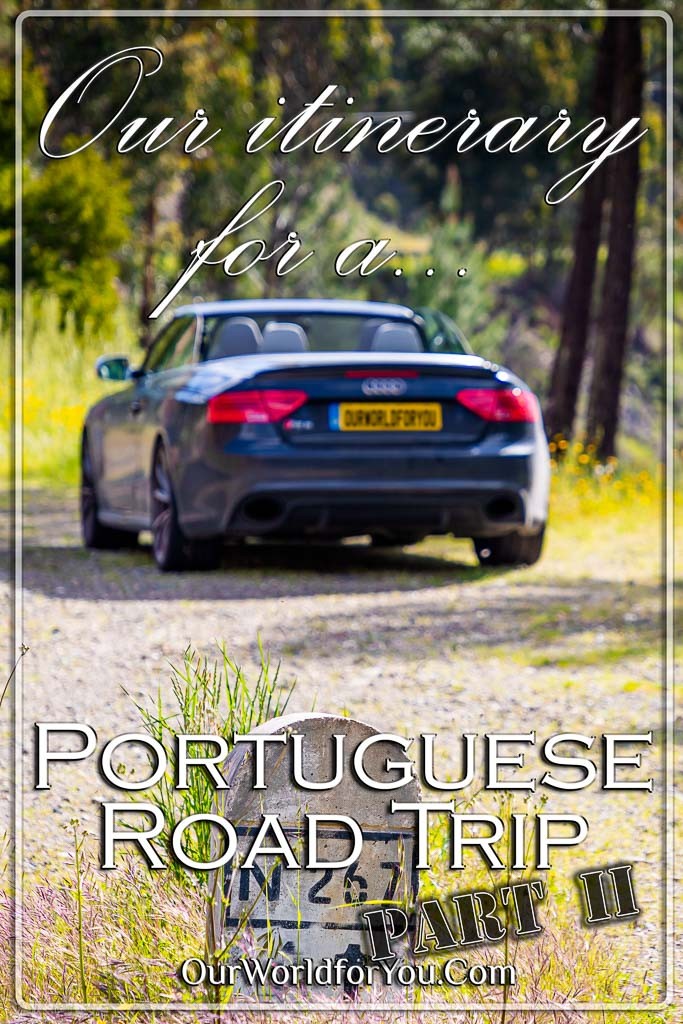
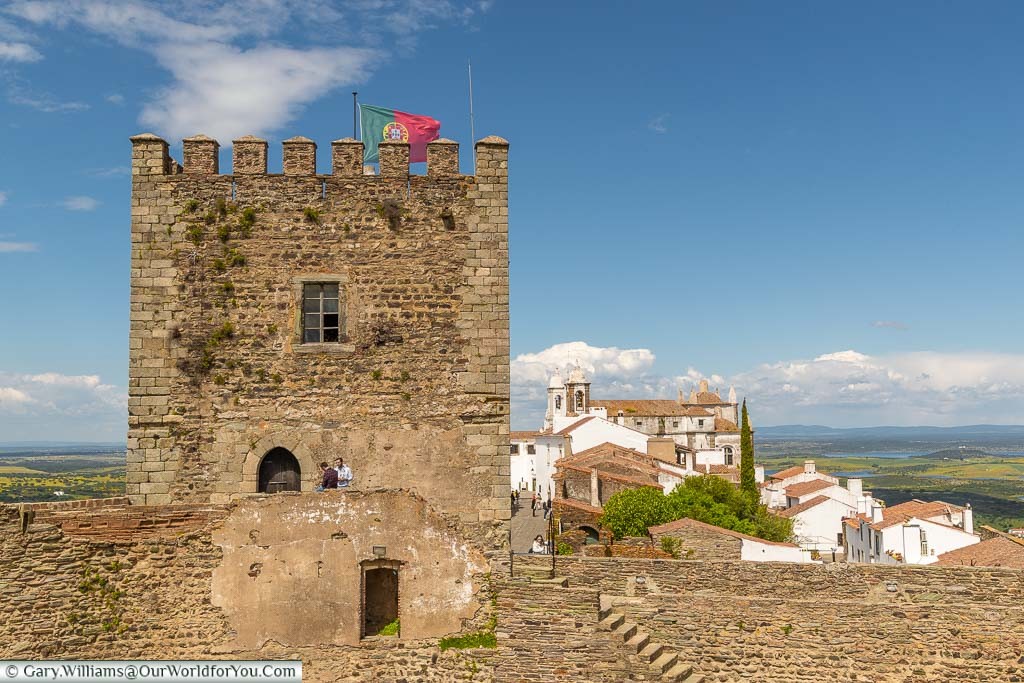
How to get to Portugal
As mentioned in part 1 of our Portuguese itinerary, we love to take our own car on road trips and set off from our doorstep in the UK.
Therefore, we’ve added a couple of additional nights at either end for the overnight Brittany Ferry journey and also our cheeky couple nights in León in northern Spain.
So, within this itinerary, I’ve included the hop through Spain. If you wish to keep the road trip to 14-nights, pick up a rental car from Porto, Lisbon or Faro airports and set off on the circular route from your chosen destination.
The inspiration for our Portuguese road trip
Portugal offers something for everyone The Landscape – Explore the beautiful countryside in the Alentejo region and the hilltop villages.
History & Culture – The centuries of ancient history, especially in Évora and Tomar.
The architecture – Porto’s colourful streets and its magnificent churches with the Azulejo glazed, ceramic tilework.
& Food and Drink – A friend of ours has recommended a couple of Porto dishes, the Portuguese sandwich Francesinha and suckling pig. Of course, visiting Porto, we must sample the Port wine.
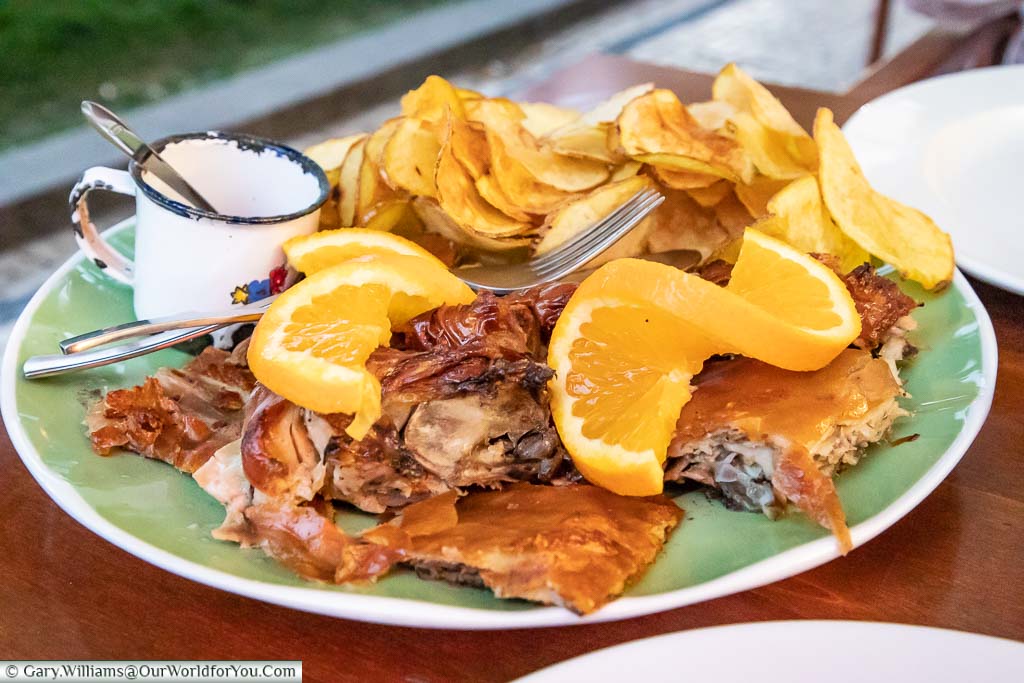
Our recent new found love is Portugal, it is such a beautiful country. While planning our trip, I used the DK Eyewitness books. I find them extremely informative, easy to follow and the pictures and maps tempt you into discovering more.
We used a previous version of this book to plan our north to south Portuguese road trip, now you can grab the revised copy.
Lagos to Évora via Beja and the hilltop town of Monsaraz
Through rural landscape to the Chapel of BonesSo, in part two of our 14-night Portuguese road trip, we depart from Lagos in the Algarve and journey northeast.
I say the northeast; Gary broke the news that another motor-racing circuit nearby in Portimão only 15 miles (24 km) away. Yes, you guessed it; we popped by to Portimão Circuit for a quick photo.
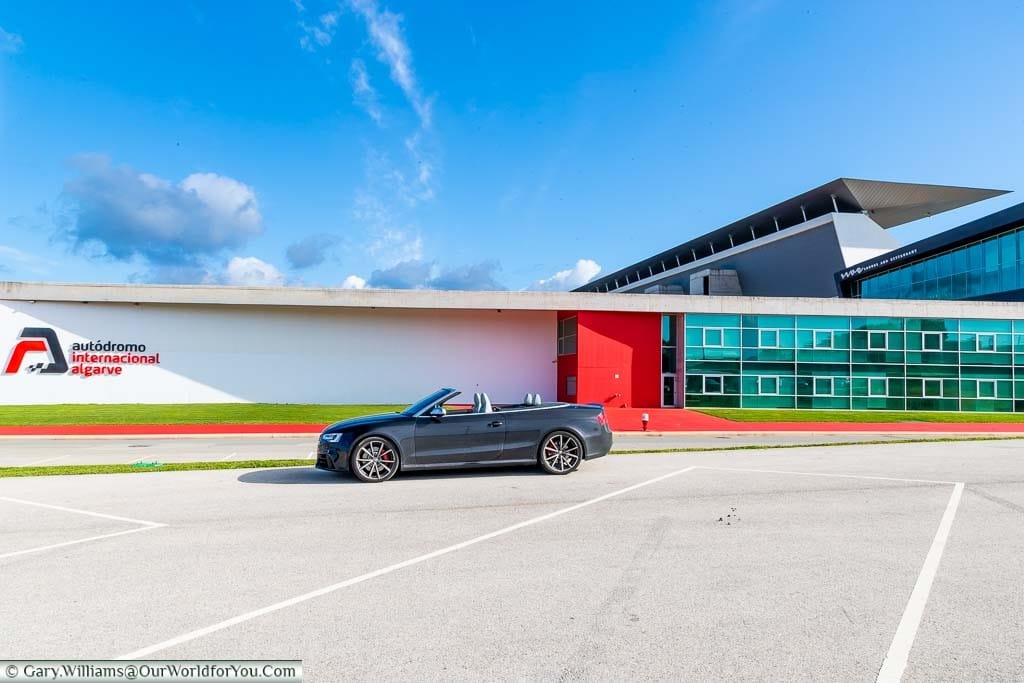
Our next stop was to Beja, a delightful city in the Alentejo region of Portugal. We chose to journey across the countryside to Beja, touring through villages and mountains; the scenery was beautiful.
Beja is full of history through its narrow streets and praças and especially the 13th-century Castle of Beja and its city walls.
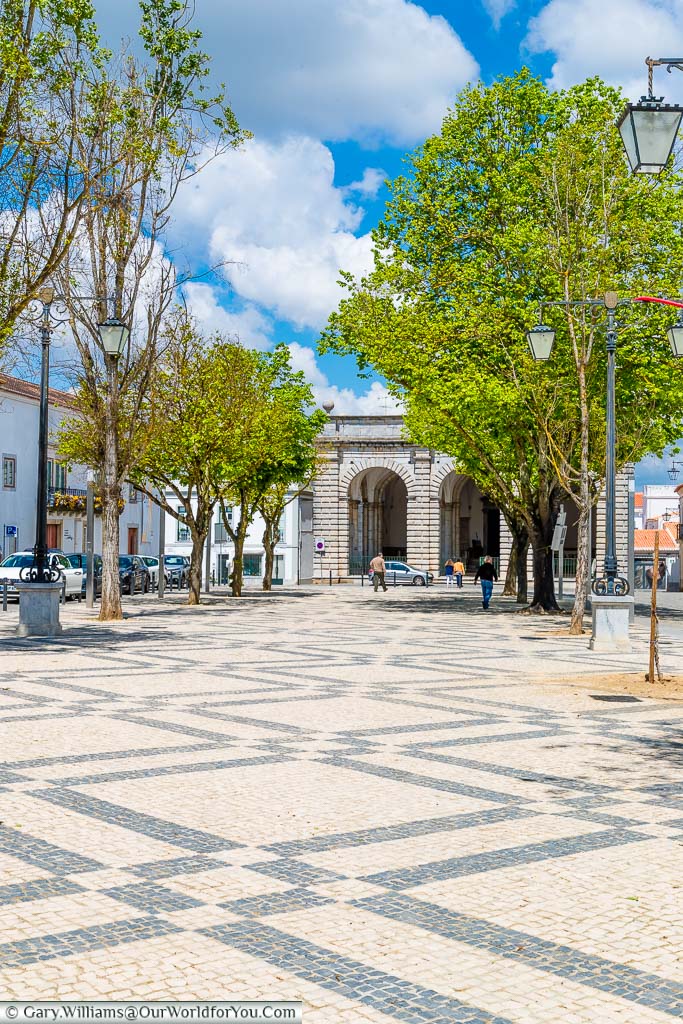
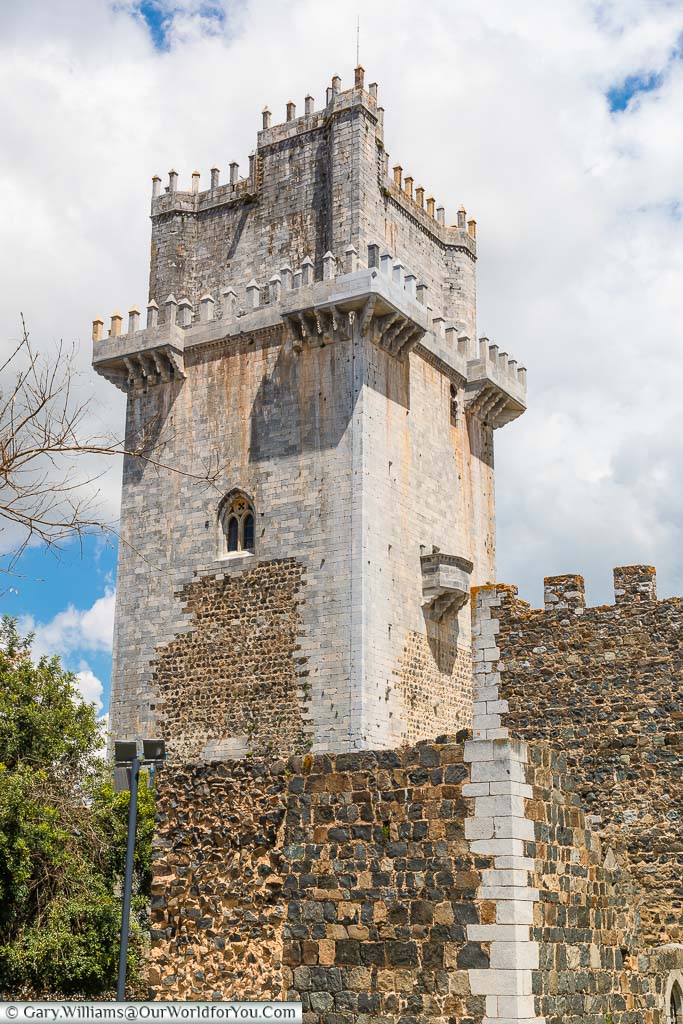
After our coffee and pastel de nata break, we were off to our next stop Monsaraz an astonishing hilltop town close to the Spanish border.
Once again, weaving our way cross-country, we arrive at Monsaraz. Due to its prominent geographical location, Monsaraz has been fought over many times in the past.
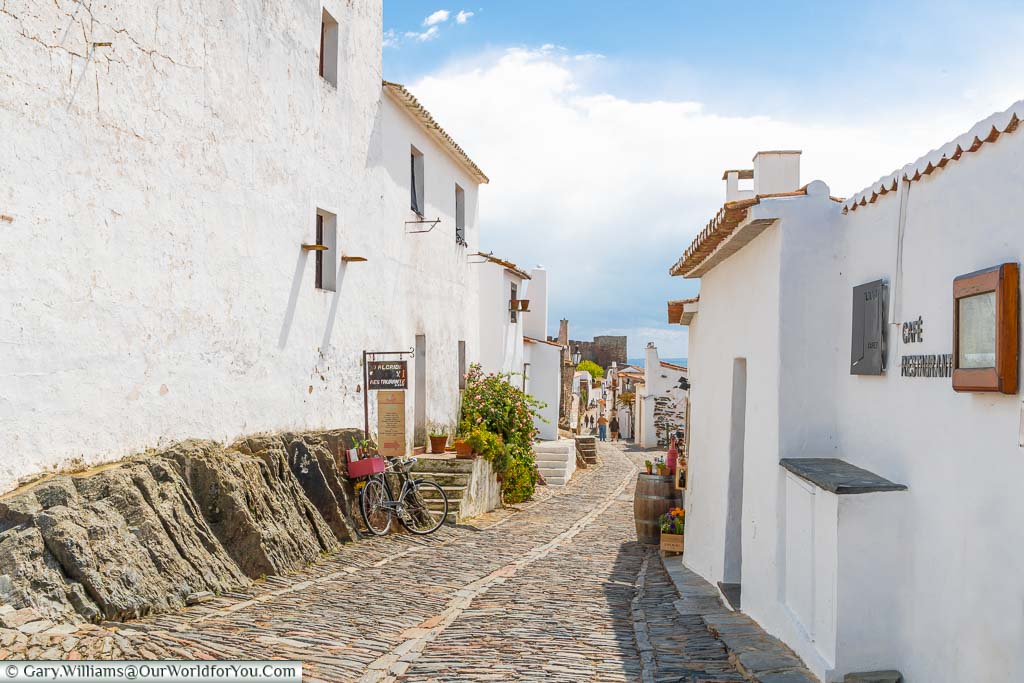
Time waits for no man or woman; we are off to the UNESCO city Évora, our home for the next 2-nights.
We check into Évora Olive Hotel, have a quick freshen up and take a short stroll into the Old Town to explore the historic city for the rest of the day and evening.
We were looking forward to discovering Évora in more depth the following day.
Places to visit in Évora
- Stroll amongst the medieval lanes and relax in the enchanting Praça do Giraldo.
- Visit the fascinating Chapel of Bones, created in the 16th-century by three monks.
- Climb upon the rooftop of Évora Cathedral and savour the view of the countryside beyond
- Discover the 1st century AD ruins of a Roman Temple.
- Relax in Largo de San Francisco.
- Wander amongst the arches of Évora’s 16th century Prata Aqueduct.
Where to stay in Évora
Our accommodation for the two nights in Évora was at the Évora Olive Hotel.
We enjoyed our stay at Évora Olive Hotel. Our bedroom was perhaps slightly small; however, I would highly recommend it.
The staff were friendly and helpful. The underground parking was excellent even for a larger car, and the hotel’s location was extremely central.
A day discovering Évora
Roman ruins, aqueducts, and rooftop walksSpending a day exploring the historical city of Évora was going to be fun. There’s so much to see, and it was also pleasant knowing that we were having a break from driving for one day.
Like most towns and cities, the best way to discover them is by putting on a pair of comfy shoes and start walking the streets. I love wandering the narrow lanes between the whitewashed homes.
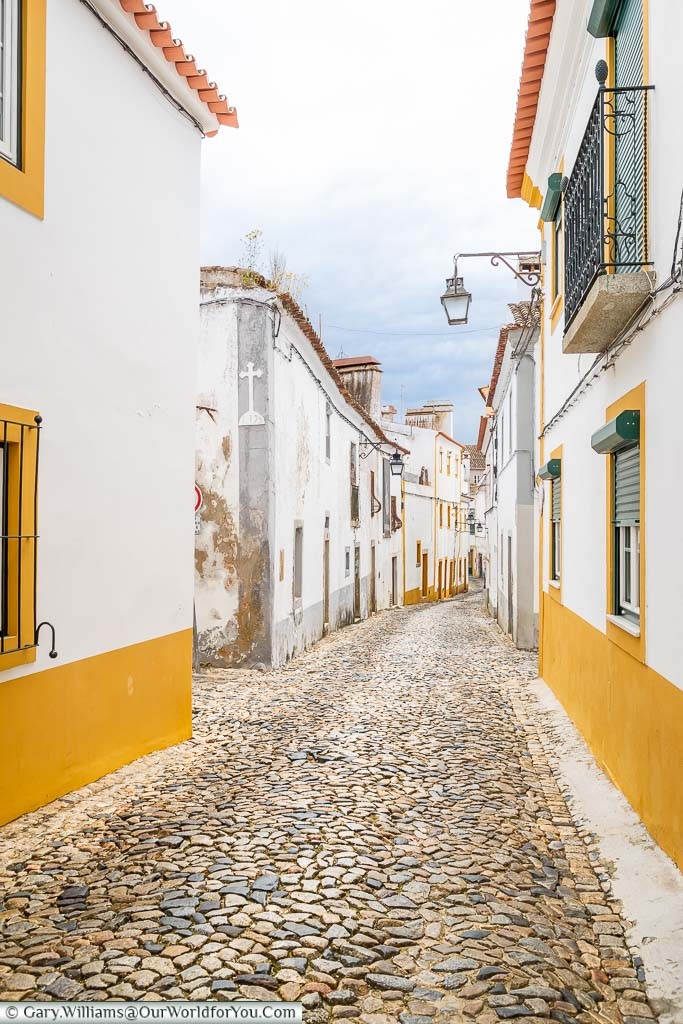
I have a bit of a fascination with cemeteries and ossuaries, so finding out that Évora had a Chapel of Bones was exciting. The chapel was formed during the 16th-century by three monks, and 5,000 bones were unearthed to create this unusual chapel, but equally, it is intriguing.
There are some delightful squares in Évora, especially Praça do Giraldo, surrounded by historic buildings and collonaded walkways. Also, Largo de San Francisco is a lovely place to sit and watch the world pass by.
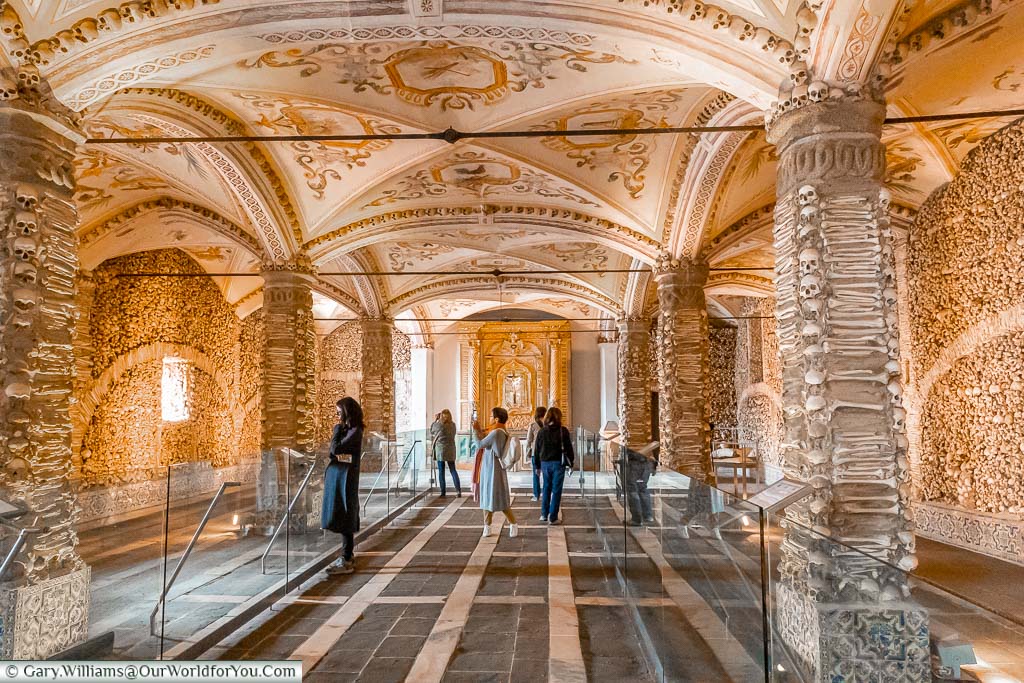
I highly recommend a visit to Évora Cathedral, one of the oldest in Portugal. Not only does it have a charming cloister, but you can also climb up on the cathedral roof and stroll around the steeples and balustrades.
Just a short hop from the cathedral are the ruins of a Roman Temple dated 1st-century AD and such a reminder of Évora’s ancient past.
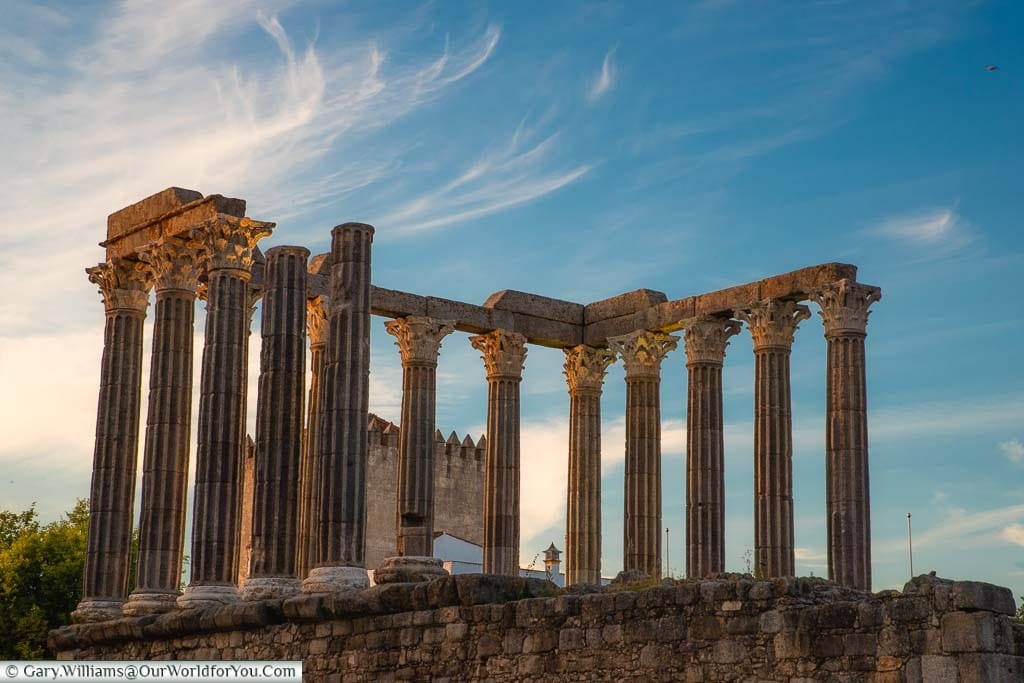
Évora to Óbidos via Amoreira Aqueduct in Elvas
Passing flowering meadows, olive groves and gnarly vineyardsToday we’re heading to Óbidos, but of course, not the direct route. We’re detouring to Elvas first to see the Amoreira Aqueduct. Picking up the N254, N255 and then onto the N4.
Bearing in mind that we want to enjoy the Portuguese countryside and spend time in the hilltop town of Óbidos, there’s wasn’t enough hours in the day to explore the UNESCO town of Elvas in-depth.
However, the aqueduct on its own was exceptionally impressive. The 16th-century feat of engineering has an incredible 833 arches. It stretches 24,623 ft (7,504m) from its spring at Serra do Bispo to the Elvas town fountain.
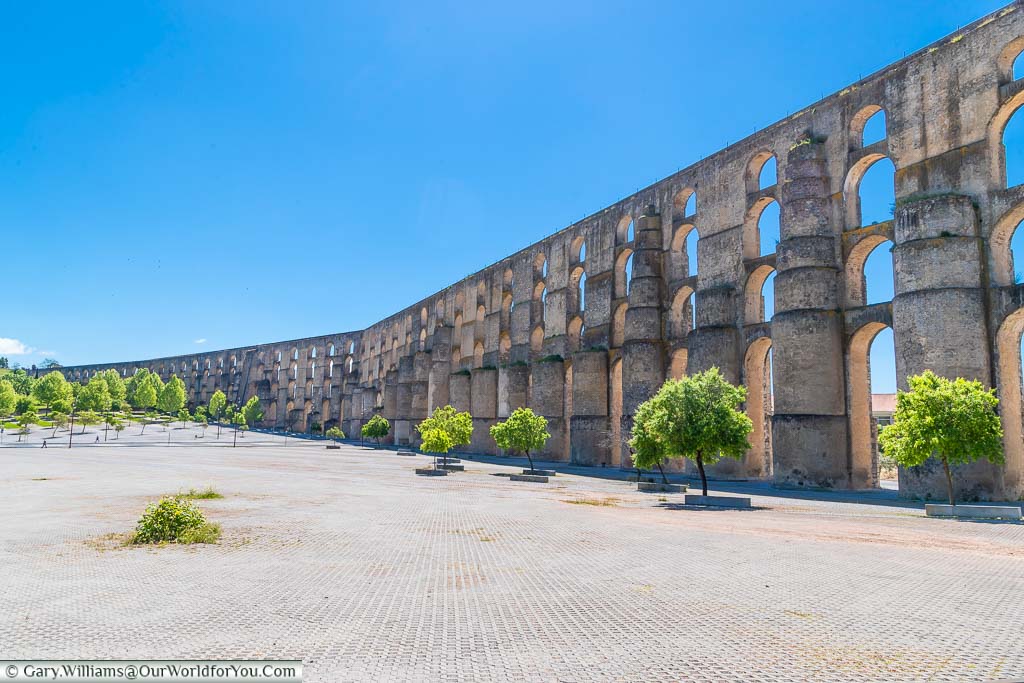
To reach Óbidos, we jump on the N4, pick up the N251, IC10 and N114 leading you very close to Óbidos.
Arriving at Óbidos mid-afternoon, we check-in for our one-night stay at Hotel Louro and head straight out to go and explore the medieval town and castle.
We have created a little YouTube video of central Portugal.
Why not subscribe to our YouTube channel and get the latest clips as we post them?
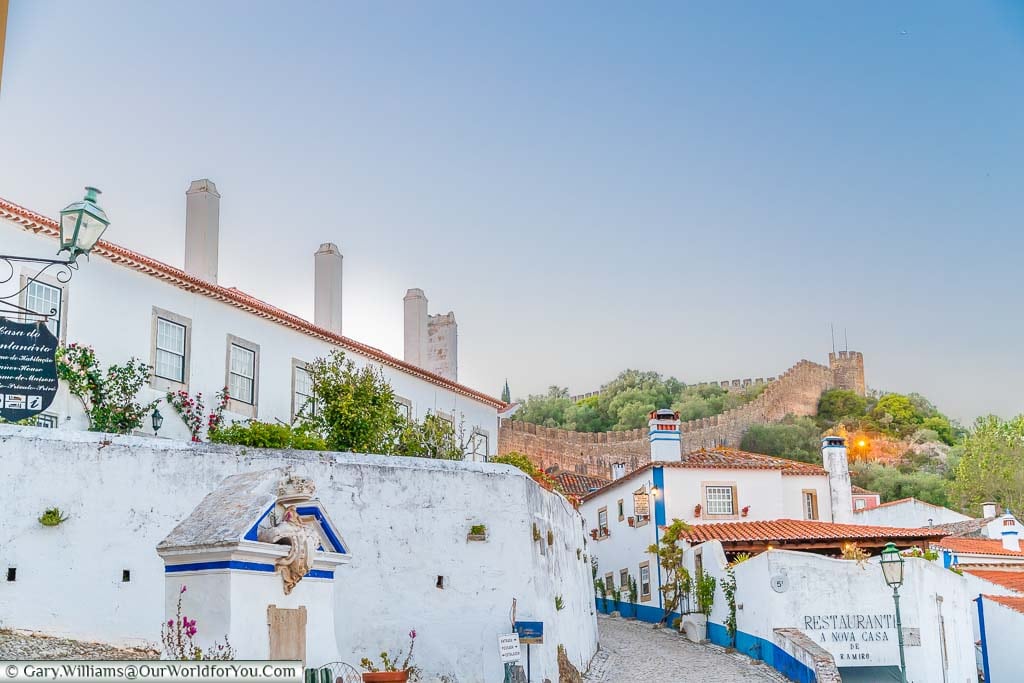
It’s how you would envisage a quaint Portuguese fortified town to be. With charming narrow cobble-stoned lanes, a maze of whitewashed homes and vibrant overflowing window boxes.
Óbidos’s ancient history dates back centuries, even prior to the arrival of the Romans. Evidence of Roman ruins can still be found around the base of the medieval towers of Óbidos Castle.
Places to visit en-route and in and around Óbidos
- Visit the towering Amoreira Aqueduct in Elvas.
- Tour across Central Portugal’s beautiful countryside and admire the Alentejo vineyards and olive groves.
- Explore the ancient, whitewashed lanes and castle at Óbidos.
Where to stay in Óbidos
Our accommodation for the one night in Óbidos was at the Hotel Louro.
Hotel Louro is just on the outskirts of the old town. For us, an ideal location, it was only about a 5–7-minute walk into historic Obidos, and the onsite parking was spacious.
Óbidos to Tomar via Batalha Monastery
Discovering the Knights TemplarTomar is only a short hop away; however, prior to heading to Tomar, we visit the magnificent UNESCO Monastery of Batalha.
This stunning gothic monastery is beautiful inside and out. With its tranquil cloister and the Founder’s Chapel housing, the tomb to King John I of Portugal and his English wife.
Then within the Chapterhouse, there’s an incredibly moving vigil, where two sentries are standing guard over the Tombs of the Unknown Soldiers from WWI. Nearby the eternal flame flickers in memory.
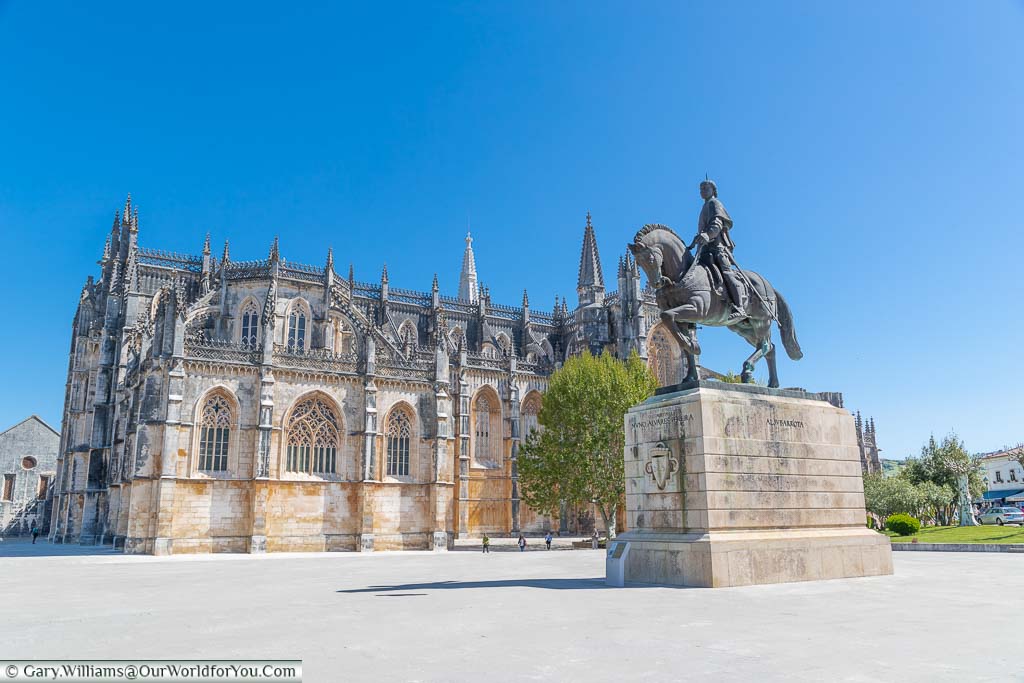
Our journey continues onto Tomar, travelling along the IC9 for most of the way. We head directly to the UNESCO Covent of Christ in Tomar; I can’t wait to visit the Knights Templar Church within.
The Convent of Christ sits high upon a hilltop overlooking Tomar, which was once a prominent castle.
The first Grand Master of the Order of the Templars initially founded the convent in the 12th-century. During which time the 16-sided Charola was built. Like many of the Knights Temples, it’s built to signify the Rotunda of Jerusalem’s Holy Sepulchre. It is incredibly ornate; opulence is an understatement.
We continue to explore the rest of the huge convent, with its maze of cloisters, arcades and striking architecture. There are seven or eight tranquil cloisters in the convent; to be perfectly honest, I lost count. However, another site to see is the ornamental Manueline Window of the Chapter House. Which is decorated in nautical stone motifs of snaking ropes, chains and gnarly coral.
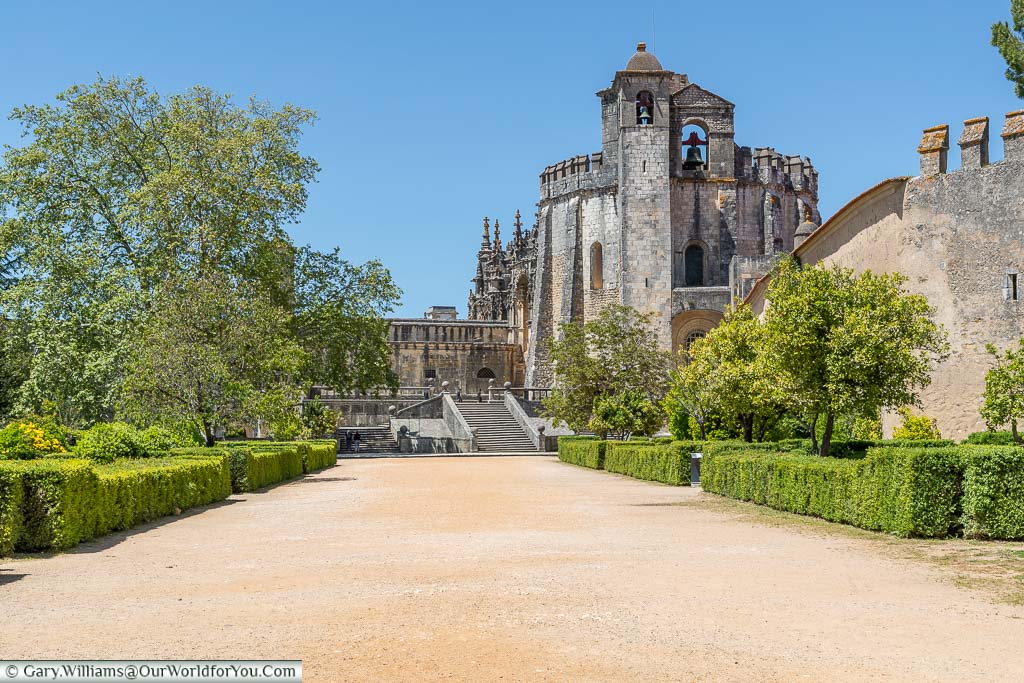
The next stop is to check-in for our 1-night stay at the Hotel Dos Templarios and head straight out to enjoy the late afternoon and evening discovering Tomar.
Tomar is slightly off the tourist route, so you feel that you are undoubtedly mixing with the locals. The historic city is a pleasure to stroll around; the peaceful, cobbled, rustic streets lead you from one balcony strewn lane to another.
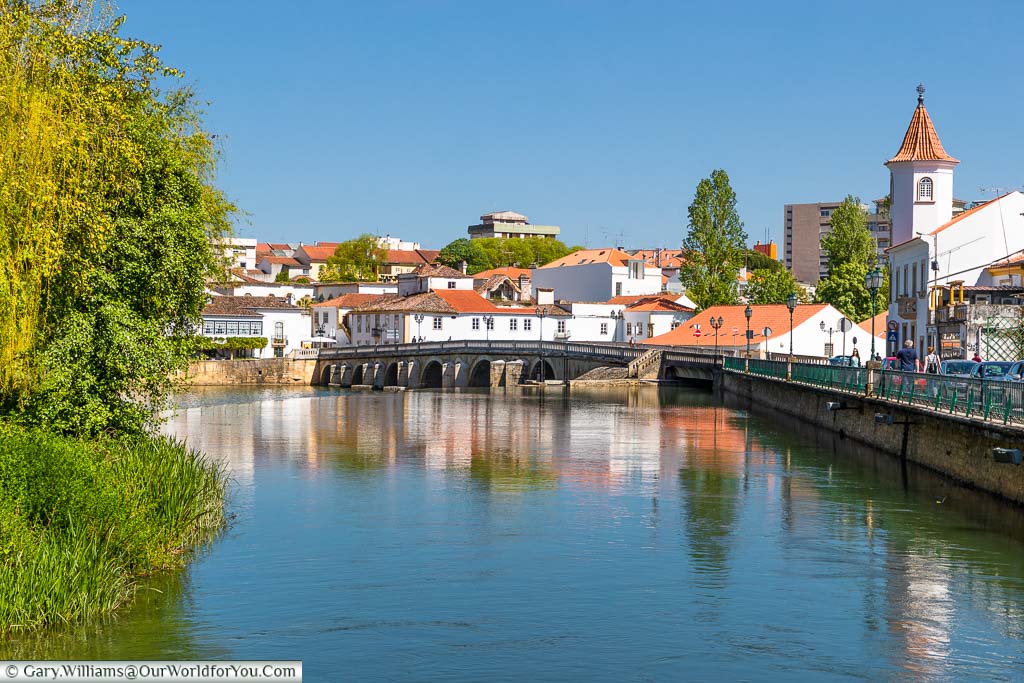
Places to visit in and en-route to Tomar
- Visit the Monastery of Batalha
- Explore the ancient Covent of Christ in Tomar
- Discover the charming streets and traditional Portuguese tiling and architecture in Tomar.
Where to stay in Tomar
Our accommodation for the one night in Tomar was at the Hotel Dos Templarios.
Hotel Dos Templarios is a fairly large hotel in a peaceful location next to the Nabao River. It is in a great location for a short stroll into the historic old town. The parking facilities were especially good, and a buffet breakfast was included.
Tomar to Porto via Conímbriga and a further tour through the Douro Valley
Visiting Roman ruins and weaving terraced vineyardsToday is a full day en-route to Porto, the charismatic city in the north of Portugal.
Our first stop is to the Roman Ruins of Conímbriga, just south of Coimbra, therefore it’s north on the N110 and the N347.
The Roman settlement is one of the largest excavated in Portugal and was pretty impressive. The majority of the settlement is low-lying; nonetheless, you undoubtedly get the feel and extent of the size and layout of the ancient town.
The Romans arrived in this area of Portugal around 139 BC. However, it was during the reign of Emperor Augustus that the grander structures were built. Delicate and colourful mosaics can be seen inlaid within the palatial interior gardens.
The remains of thermal baths, underground tunnels, a Roman Forum and ruins of an amphitheatre can still be explored.
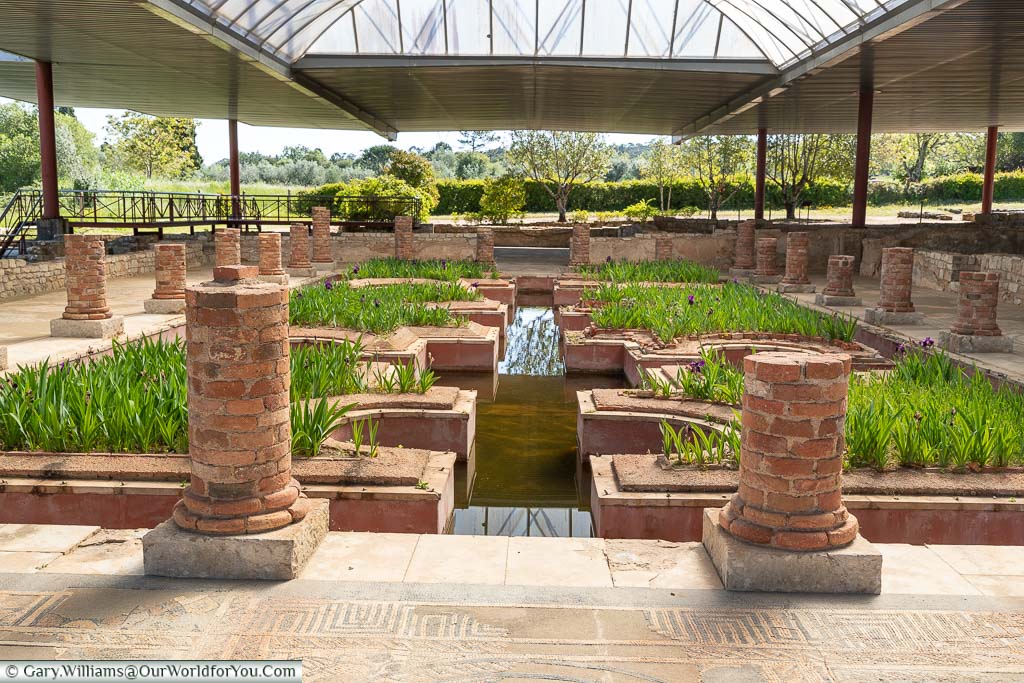
Jumping onto the motorway to gain some time, we pick up the IP3 and then onto the A24 to Peso da Régua. This gives us the opportunity to tour the Douro Valley further, journeying west towards Porto.
It’s magnificent weaving amid the lush landscape, crisscrossing the Douro vineyards amongst the blossoming fruit trees.
We spend a couple of hours on the slower route and then jump on the A4 motorway west into Porto.
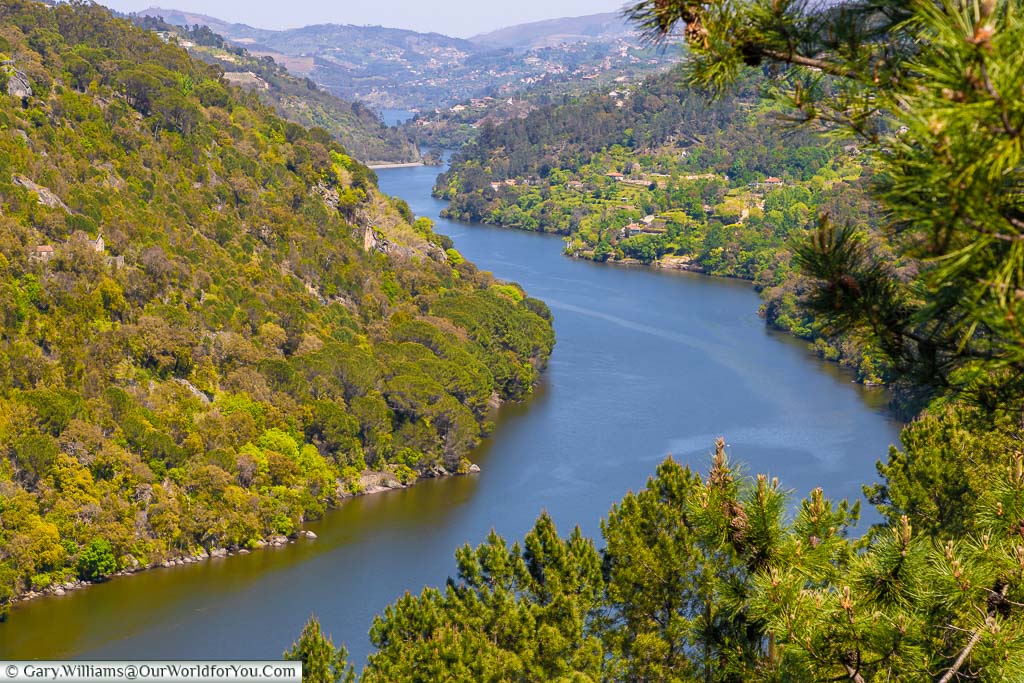
Our stay in Porto was at an apartment with onsite parking. The apartment gave us the flexibility of city life and to come and go as we pleased.
The accommodation is no longer available; however, I found Condes de Azevedo Palace Apartments, which are very centrally located and had onsite parking.
The rest of the late afternoon and evening we spent discovering the enchanting city of Porto. We were so looking forward to exploring Porto in more depth over the next couple of days.
Places to visit en-route to Porto & local cuisine
- Visit the ancient Roman Ruins of Conímbriga
- Tour through the lush landscape of the Douro Valley
- Start to explore the vibrant city of Porto.
- Indulge in the Francesinha, a sandwich like no other.
Where to stay in Porto
Our accommodation for the three nights in Porto was in an apartment.
Our chosen apartment is no longer available; however, I found Condes de Azevedo Palace Apartments. This accommodation is very centrally located and had onsite parking.
First full day in Porto
Stunning architecture, charismatic streets, and Port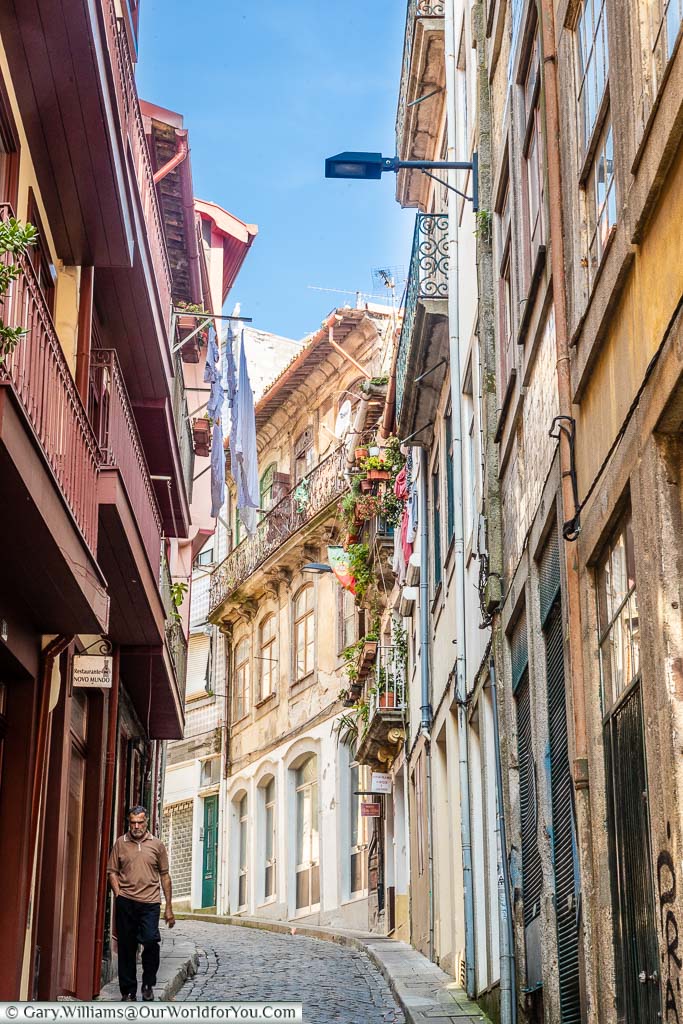
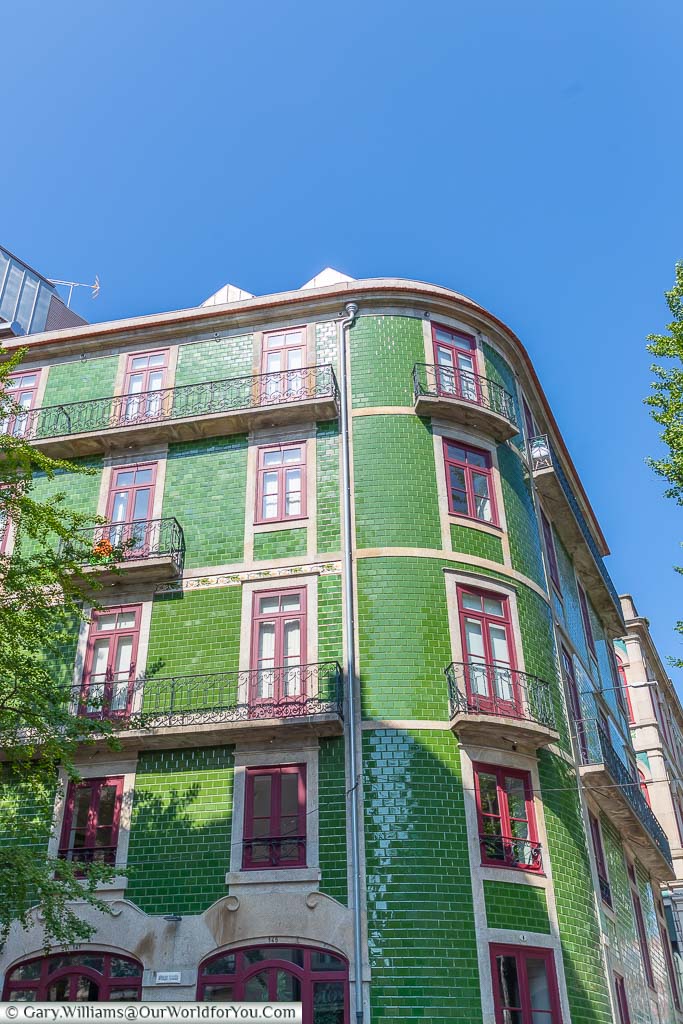
On our first full day, we just walked and walked; there’s no better way to get the true feel of a location. We strolled amongst the narrow lanes of Porto with proud Portuguese flags fluttering from tiny wrought-iron balconies high above.
Then ventured to Douro River, the pulsating heart of this northern Portuguese city. Head across the magnificent Dom Luís I Bridge for that iconic view back across Porto’s UNESCO Old Town to the lower banks of the Gaia.
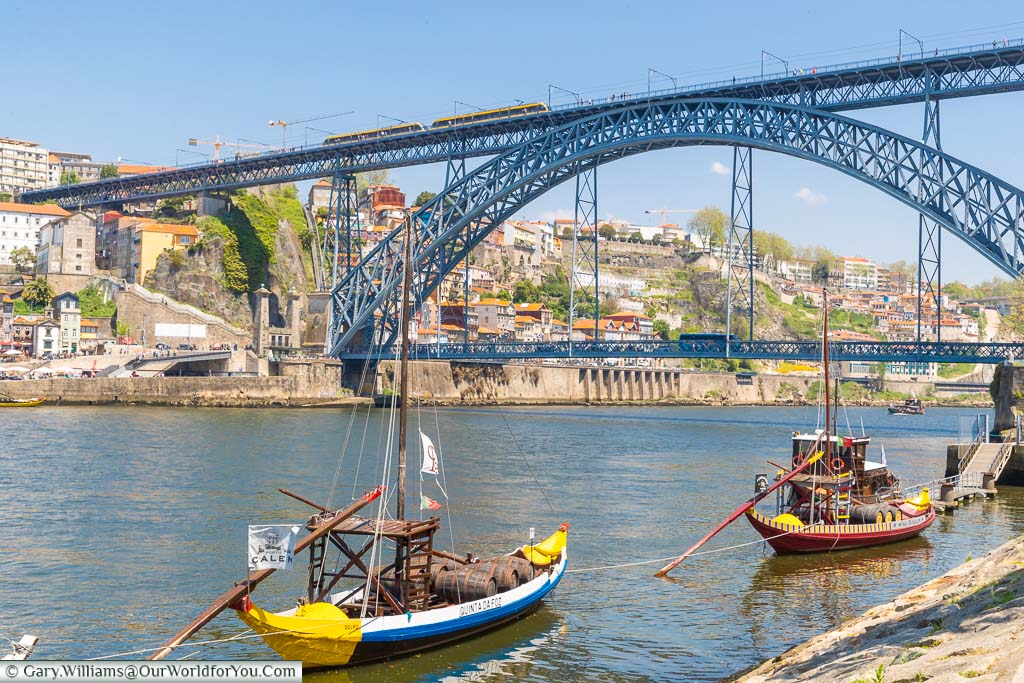
In the vibrant Gaia region of Porto, not only will you find fascinating examples of street art, but it’s also where you’ll discover the Port wine cellars.
It’s lovely strolling along both banks of the Douro; the atmosphere is so relaxing. You’ll spot the flat-bottomed Douro Rabello boats, which were historically used to transport the Port wine from the Douro Valley vineyards to the cellars in the city.
Second full day in Porto
Historic budlings, azulejo décor and a delicate slice of proudnessFor our second exciting day in Porto, we continue to explore the ancient city and search out those incredibly historic sites and charming locations.
Sitting prominently in Porto is Sé do Porto, the city’s Romanesque cathedral, which was completed in 1737 and one of the most important and oldest buildings in Porto.
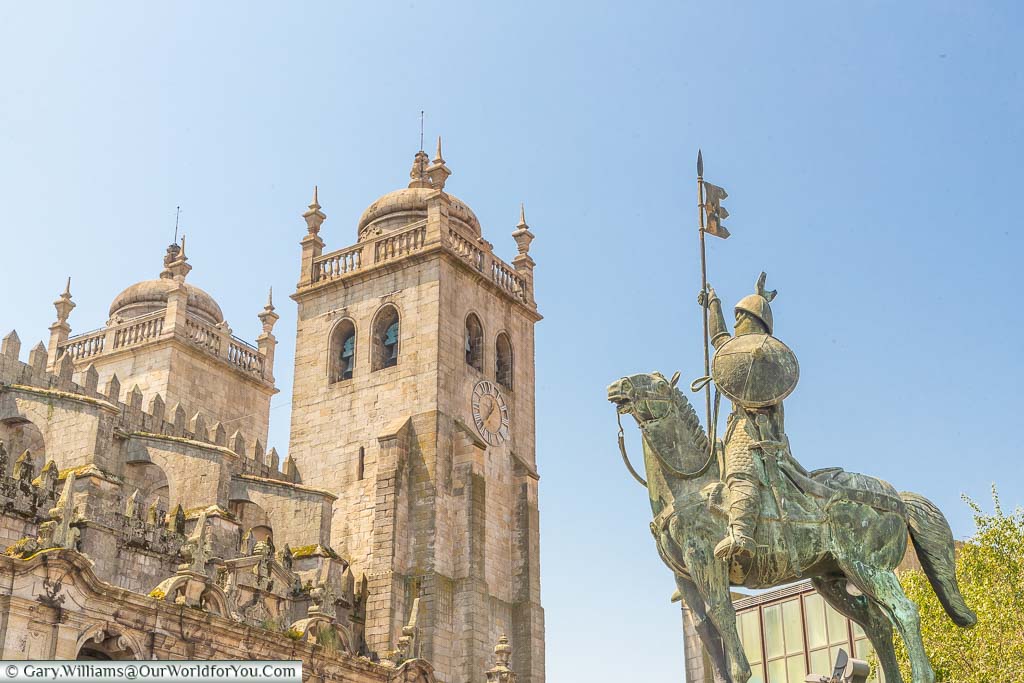
Just a short stroll from the cathedral is Porto’s São Bento train station. You may wonder why I mention this but take a peek into the stations’ entrance hall at the delightful azulejo tiling. The beautiful blue and white tiles depict Portugal’s historical past.
The azulejo doesn’t end there; it is adorned on so many buildings. The ones I especially loved were, Igreja do Carmo and Igreja dos Carmelitas.
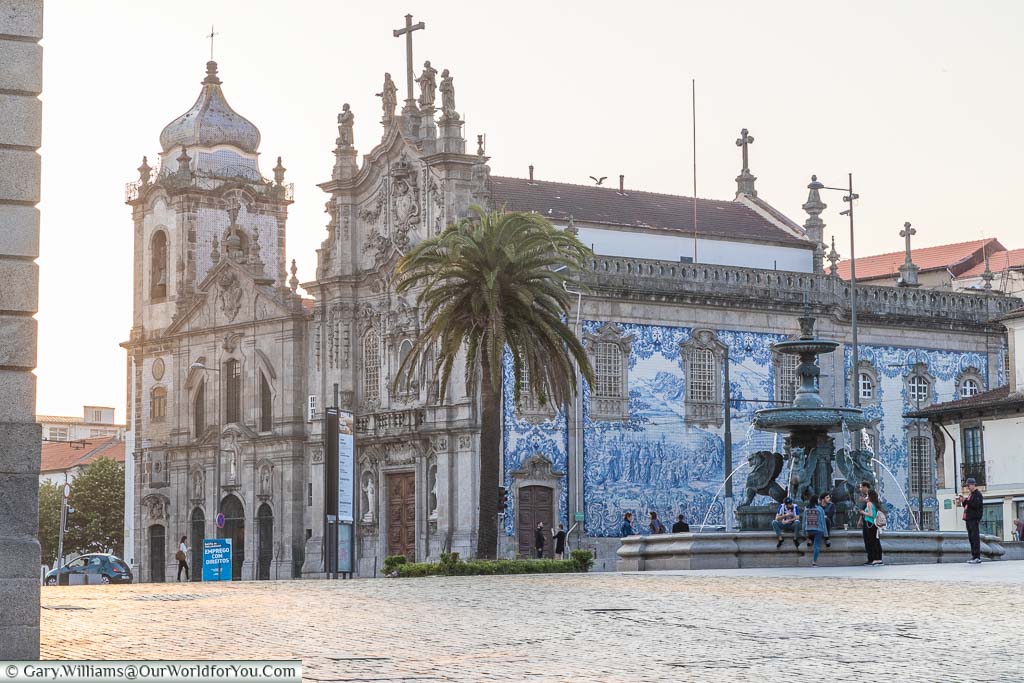
If you feel a welcome break is imminent, then head to the elegant Majestic Café, full of Art Nouveau character and charm. Ohh, yes and coffee and pastries.
To rest those weary feet, hop on one of Porto’s Heritage Trams. Route 22 is a circular route and takes you through some of Porto’s popular spots.
Porto to León, Spain or sadly, it’s time to return your rental car
Via Santa Clara Aqueduct & Póvoa de VarzimAs I mentioned, our Portuguese road trip started in the UK. So, we’re having a slow mooch back to the Brittany Ferry terminal in Bilbao and spending a couple of nights in León, Spain.
Although before we leave Portugal, we have two briefs stops, one to the Santa Clara Aqueduct in Vila do Conde. Then a short stop at Póvoa de Varzim on the Atlantic Ocean shoreline.
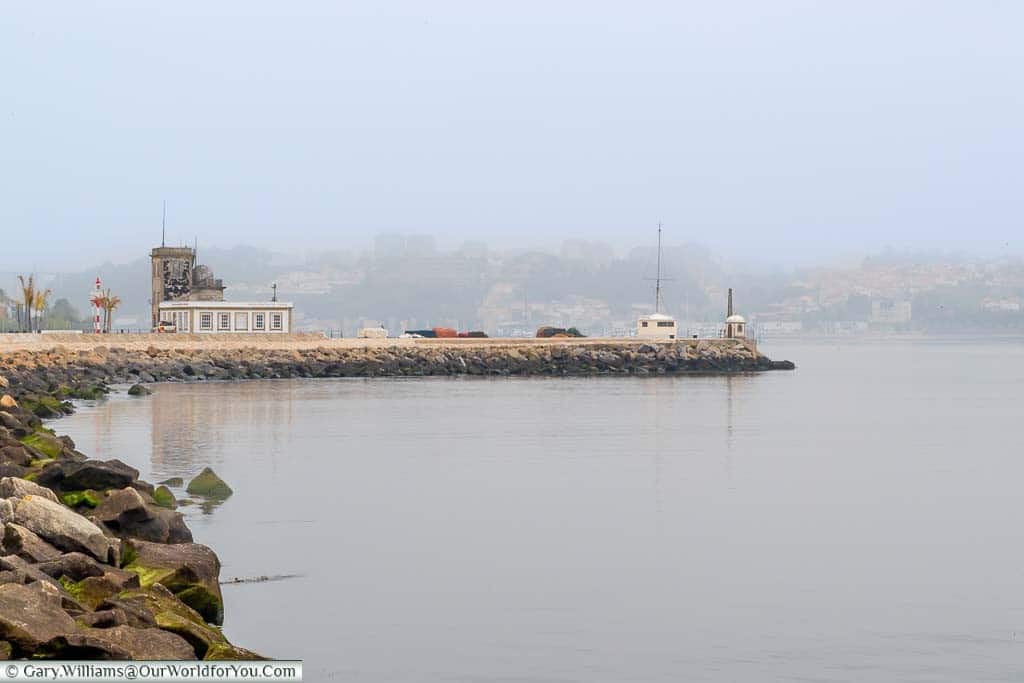
We start by heading north along the A28 and N13 to the Santa Clara Aqueduct. The 17th-century aqueduct is the second largest in Portugal and runs for 2.5miles (4km) and has an incredible 999 arches.
I appear to have a bit of a fixation with aqueducts. Is this the third or fourth we’ve visited on this trip?
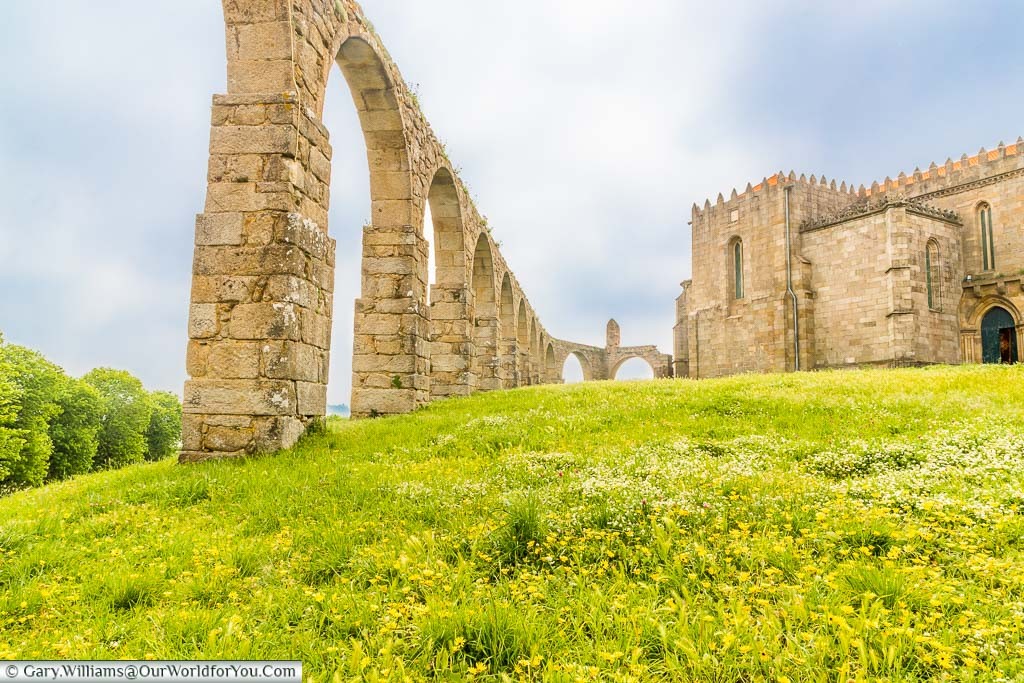
We take one last look at the Atlantic Ocean coastline and visit Póvoa de Varzim just 2.5 miles along the shoreline. Póvoa de Varzim has glorious golden sandy beaches, intriguing nautical history, and vibrant architecture. This may be a location to add to the list for our next Portuguese adventure.
So, there we go, we hop back into the car, and our next stop is León in Spain, home of Rioja and tapas.
We chose to double back on ourselves slightly. We then picked up the A4 motorway toll road for most of the journey through Portugal, heading northeast.
We toured through the Parque Natural de Montesinho on the N103-7, which became the ZA-925 once we had entered Spain.
Heading east, we pick up the A-52, we journey north briefly on the A6, LE-411 and then the A-66 to the outskirts of León.
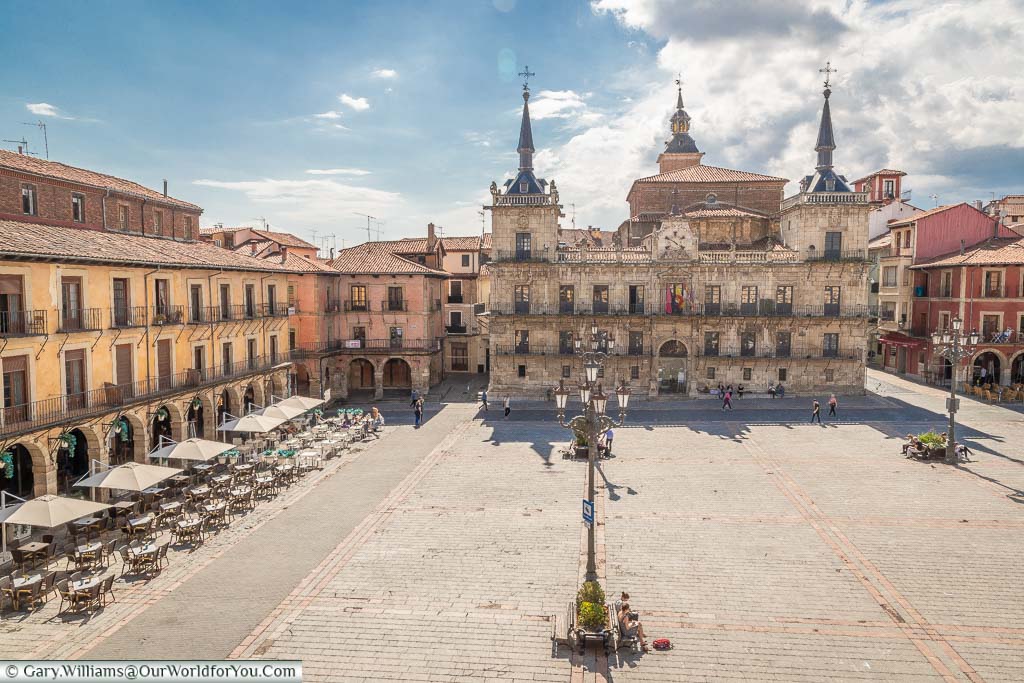
Arriving at León mid/late afternoon, we check-in for our two-night stay at NH Collection León Plaza Mayor. For the rest of the afternoon and evening, we spend discovering the historic city of León.
We had the comfort of knowing we had one more day to explore León in more depth.
Places to visit in and en-route to León
- Visit the Santa Clara Aqueduct in Vila do Conde, Portugal.
- Dip your toes in the Atlantic Ocean at Póvoa de Varzim, Portugal.
- In León, soak up the relaxed atmosphere around the colonnades in Plaza Mayor.
- Look out for Guadi’s ‘The Casa de los Botines’.
- Explore León’s 13th-century Gothic Cathedral
- Admire the beautiful Spanish Renaissance Convent of San Marcos.
- Discover the remains of the ancient Roman wall.
- And wish bon voyage to the thousands of pilgrims that en-route to Santiago de Compostela.
Where to stay in León
Our accommodation for the two nights in León was at the luxury NH Collection León Plaza Mayor.
This really is in the heart of León, as the hotel entrance opens directly onto the Plaza Mayor.
Our room overlooked the historic square, which was fantastic, especially when we awoke to a colourful market being set up below us.
The parking is underground in a public car park. However, they have allocated spaces for the hotel at a discounted charge.
A full day exploring León
Pilgrims, Romans, and GaudiLeón in northern Spain hadn’t previously been on my radar. Even though we have visited many other northern towns and cities; however, I’m so pleased it did.
León has so many charming qualities; the architecture is incredible, from the ornate façade of Convent de San Marcos to the striking ‘Casa de los Botines’ by Antoni Gaudi. One of his very few designs built outside Catalonia.
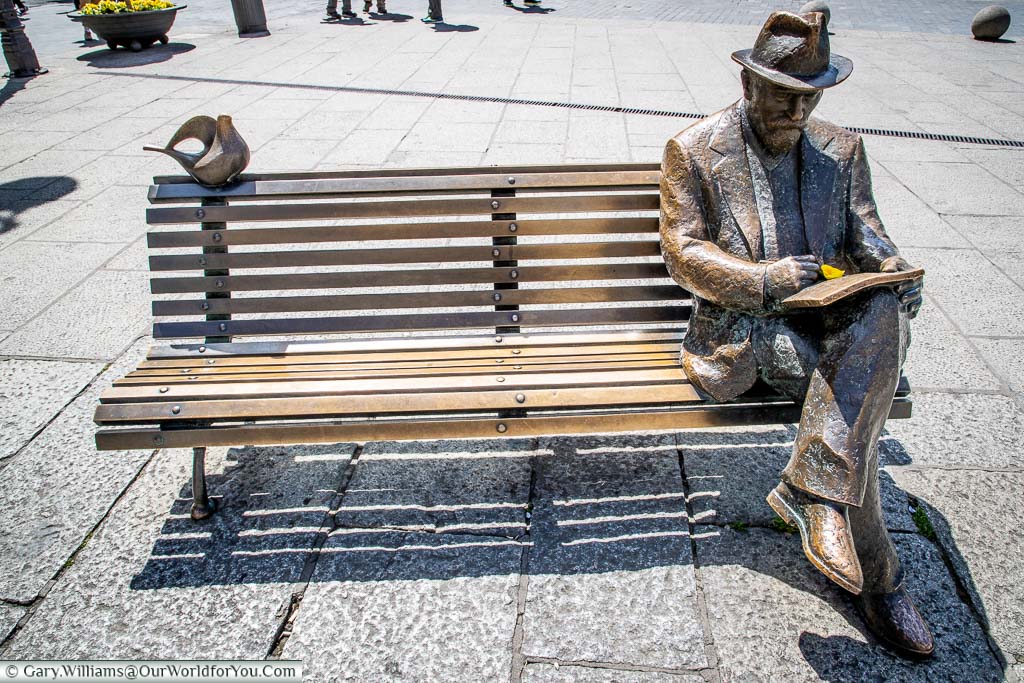
León’s Plaza Mayor is equally delightful; I could spend hours just sitting watching the world pass me by.
A further little amble, and you’ll discover León’s 13th-century gothic cathedral and the third to be built on this site. Then just a short wander east, and you’ll find the 10th-century Basílica de San Isidoro de León, built on the grounds of a Roman Temple.
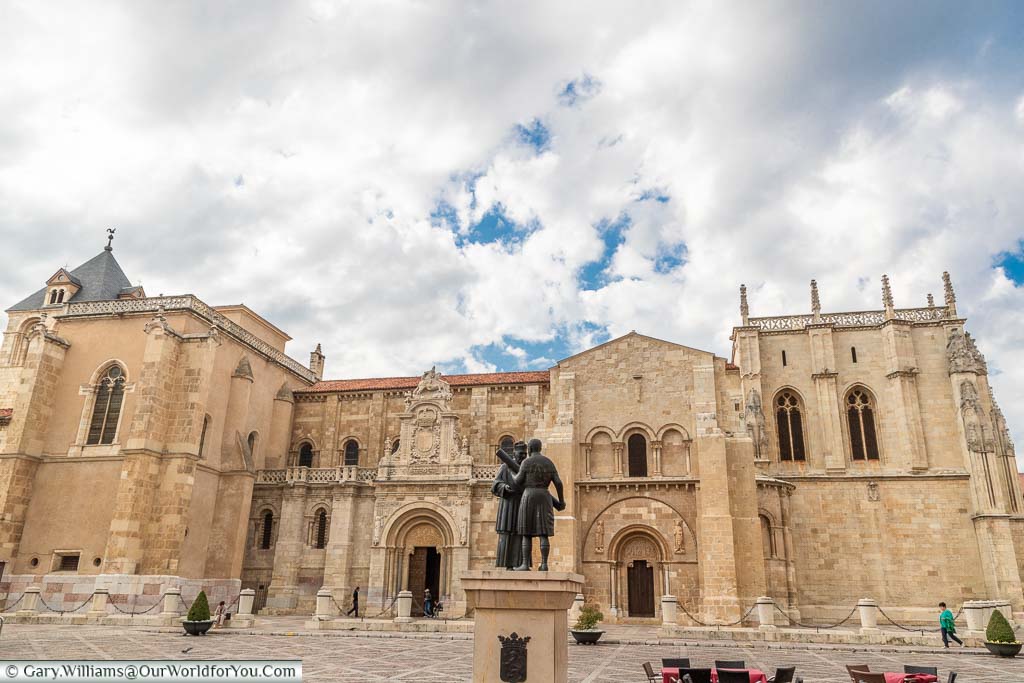
Drive from León to Bilbao
It’s homeward bound cruising through the Bay of Biscay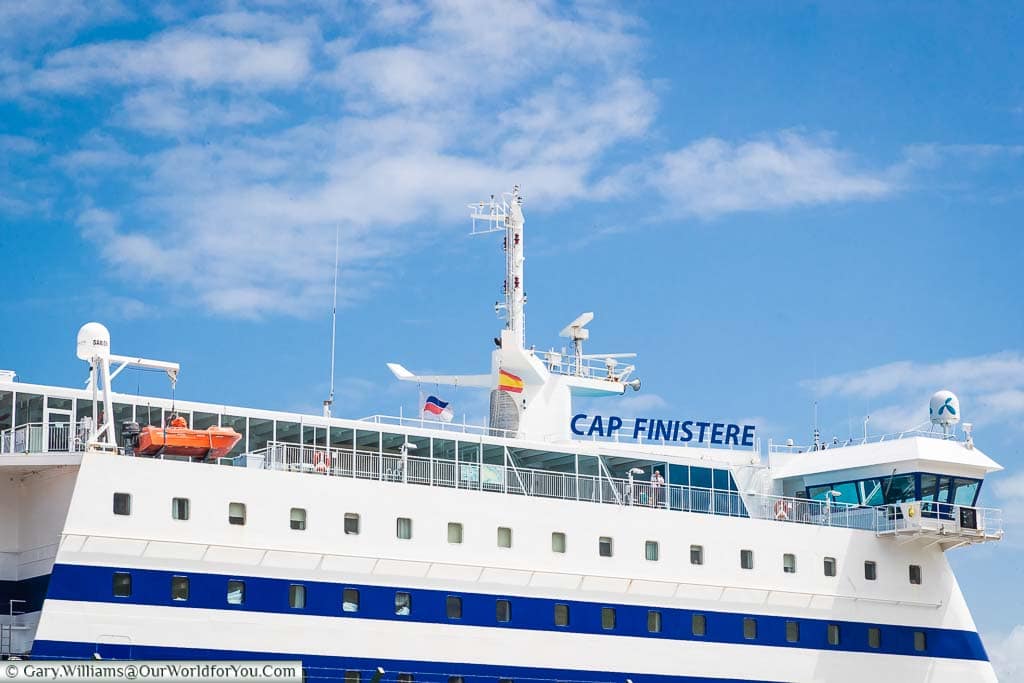
For the last short section of our journey, we head back onto the A-8 motorway and arrive at Bilbao Brittany Ferry terminal early afternoon for our early evening sailing.
I really don’t imagine this will be our last road trip adventure to Portugal, as we have fallen in love with the captivating country.
Tolls and vignettes and more
Spain – No tolls from the Spanish border to Bilbao.
Portugal – Some of Portugal’s tolls are ticketed, and you pay-as-you-go.
Additionally, there are various highways and motorways that require an ‘Electronic Toll’. I strongly advise you purchase an ‘EASYToll’ if you know you are touring the Algarve. It is necessary for the A22 along the south coast.
There are only four locations to purchase one across Portugal. If you do not have an ‘EASYToll’ set up, you will be fined, and you may not even realise that you have entered the ‘Electronic Toll’ zone.
So, I suggest you either pick up an EASYToll at the four designated locations (A28, A24, A25 and A22) they look like vending machines. Or alternatively, sign up for this service via the Portugal Tolls website for peace of mind really. Here you can enter your specific details for the 30-day pass.
- Our total mileage for the trip from south to north was around 1,198 miles (1,928km), give or take as, there were a few detours and wanderings.
- The total trip returning north again is around 2,558 miles (4,117km) – Keep in mind we are adding a couple of days to head north to Bilbao in Spain.
So, there you go
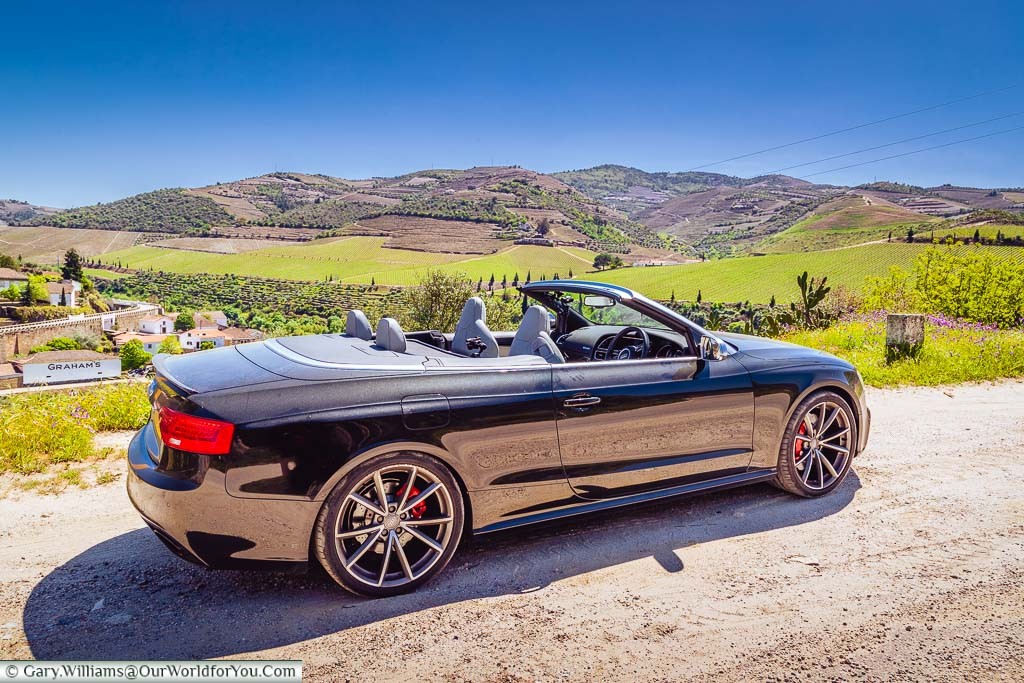
A perfect itinerary for a road trip in Portugal, north, south, east & west
* This post may contain links to affiliated sites where we earn a small commission at no additional charge to you.
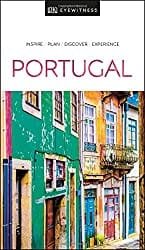

This has triggered some serious wanderlust for us. We are hardcore road trip fans. Sigh!
Portugal is a beautiful country for a road trip, there’s such a lovely mixture of fascinating history and incredible landscapes. We can’t wait to return.
What has been your favourite road trip adventure?
We’ve not been to Portugal but will put it on our list now. Our favorite road trip adventure was along the Indian west coast. The highway runs parallel to the coastline which made the views all along breathtaking. Another fav is the Great Ocean Road in Australia.
Wow, both of those road trips sound amazing. I’d heard of the Great Ocean Road in Australia, which I’d love to do. But I hadn’t heard of the road trip along the Indian West Coast.
Portugal is a lovely country for a road trip, the scenery is beautiful and it’s easy to navigate too.